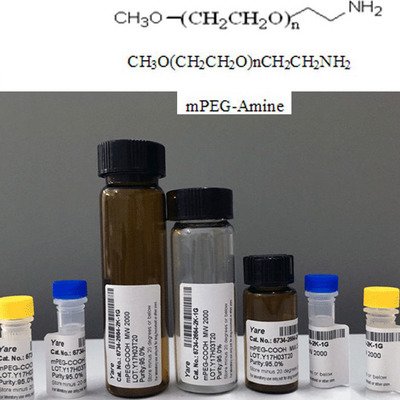what percent of plants use ethylene glycol?
Ethylene glycol is mostly known as an antifreeze, but its role goes far beyond that.
Chemical Properties of Ethylene Glycol
Ethylene glycol (C₂H₆O₂) is a widely used chemical compound with distinct physical and chemical traits. As a clear, viscous liquid with a sweet taste, it’s found in countless industrial and commercial applications. Understanding its properties is crucial, especially when examining its effects on plants and the environment due to unintended exposure.

Physical Characteristics
Ethylene glycol is colorless and odorless in its pure form, making it easy to overlook in spills or leaks. It possesses a slightly sweet flavor, which may attract animals and pose risks in accidental ingestion. The substance has the following key properties:
- Boiling Point: Approximately 198 °C (388 °F).
- Melting Point: Around -13 °C (8.6 °F).
- Viscosity: Thick and syrup-like at room temperature.
These traits are critical to its role in antifreeze, as they enable efficient heat transfer while preventing freezing in low temperatures. Learn more about its composition and characteristics here.
Solubility and Interaction with Water
One of the standout properties of ethylene glycol is its excellent solubility in water. It readily dissolves, forming a homogeneous solution. This allows it to absorb water efficiently, making it effective in products like coolants and de-icing agents. Additionally, its hygroscopic nature means it can attract and retain moisture from the environment. For more details, check its water compatibility here.
Chemical Reactivity
Ethylene glycol reacts with various substances under controlled conditions. It is generally stable but can oxidize to form glycolic acid in the presence of air and heat. This oxidation process is essential in understanding its degradation and environmental impact. For detailed insights on its chemical structure, visit this resource.
Toxicity and Risks
Despite its industrial usefulness, ethylene glycol is toxic if ingested in large quantities. Its sweet taste can be deceiving, leading to accidental poisoning in humans and animals. Toxicological profiles indicate that its byproducts, such as oxalic and glycolic acid, cause harm to the kidneys and central nervous system. Always handle it with care. Check out its toxicological details here.
Understanding these chemical properties sheds light on how ethylene glycol may interact within environments where plants could encounter it.
How Plants Interact with Ethylene Glycol
Ethylene glycol, while not naturally produced or needed by plants, has a unique presence in ecosystems due to industrial activities. Understanding how it interacts with plant life can shed light on its environmental significance.
Percentage of Plants Utilizing Ethylene Glycol
It’s important to clarify that plants do not naturally synthesize ethylene glycol. Some studies have suggested that exposure to ethylene glycol through contaminated soil or water can lead to minor absorption, though this is not considered a natural or beneficial process. For instance, researchers have noted plants can metabolize certain compounds into related byproducts, but ethylene glycol itself is a result of industrial influence rather than a plant mechanism. You can refer to more foundational details on this from the Agricultural Marketing Service.
Physiological Effects on Plants
Ethylene glycol exposure can affect plants in various ways, depending on the concentration and duration of exposure. At low levels, it may dissolve in water sources accessed by plant roots, minimally impacting growth or health. However, higher concentrations can become detrimental:
- Structural Changes: Plants exposed to ethylene glycol may show altered root structures, potentially affecting water absorption.
- Stress Responses: Stress markers such as slowed growth or discoloration have been observed when plants are in contact with glycol-contaminated environments.
- Toxicity Thresholds: Some studies highlight potential toxicity symptoms like wilting or reduced seed germination under significant ethylene glycol influence. Learn more about physiological consequences here.
These effects underscore the need for careful assessment of ethylene glycol’s presence in agricultural or natural habitats.
Impact of Environmental Concentrations
The environmental concentration of ethylene glycol plays a key role in determining its impact on plants. Here are several scenarios:
- Low Concentrations:
- May biodegrade quickly in the soil, posing minimal threat to plant health. According to research, ethylene glycol has high biodegradability, with up to 86% breakdown occurring within ten days in some conditions. This process reduces direct harm to plants (source).
- Moderate Concentrations:
- Can alter soil composition, potentially affecting water uptake or nutrient availability. Plants may struggle to adapt to these changes over time.
- High Concentrations:
- Persisting high levels from industrial runoff or spills can be toxic. Growth inhibition, reduced productivity, and fertility issues have been noted in plants within contaminated areas. More insights are available here.
By understanding these effects, farmers and environmental scientists can better manage potential risks associated with ethylene glycol exposure in plant ecosystems.
Conclusion
Ethylene glycol remains a critical industrial compound, but its unintended environmental presence raises important questions about its effects on plant life. While plants don’t naturally utilize ethylene glycol, they may encounter it through contamination in soil and water. The interaction between plants and this chemical depends heavily on concentration and exposure duration.
Summary of Key Impacts on Plants
Ethylene glycol’s effects on plants are multifaceted and sometimes unpredictable, with notable trends observed under varying concentrations:
- Trace Amounts: Small, diluted quantities may have negligible effects due to ethylene glycol’s biodegradability.
- Moderate Levels: These concentrations can alter soil and water conditions, challenging plant absorption and nutrient balance.
- High Exposure: Persistent contamination from spills or industrial runoff can significantly harm plant growth and viability, as noted in this study on its phytotoxicity.
The variability in these effects highlights the need for controlled studies and environmental vigilance.
Managing and Understanding Environmental Risks
Given its widespread use, preventing ethylene glycol contamination is key. Communities and industries must work together to:
- Monitor soil and water contamination levels.
- Educate about the safe handling of ethylene glycol to minimize accidental spills.
- Employ remediation techniques in areas where contamination threatens agriculture or ecosystems.
You can learn more about environmental guidelines related to ethylene glycol here.







